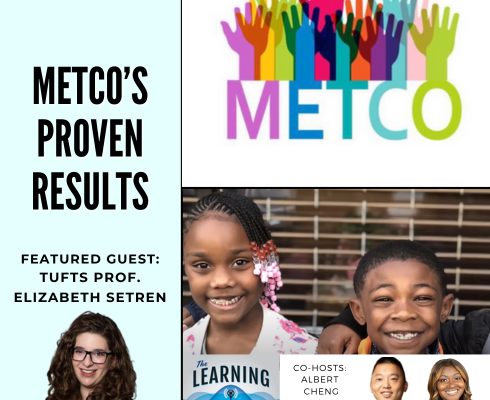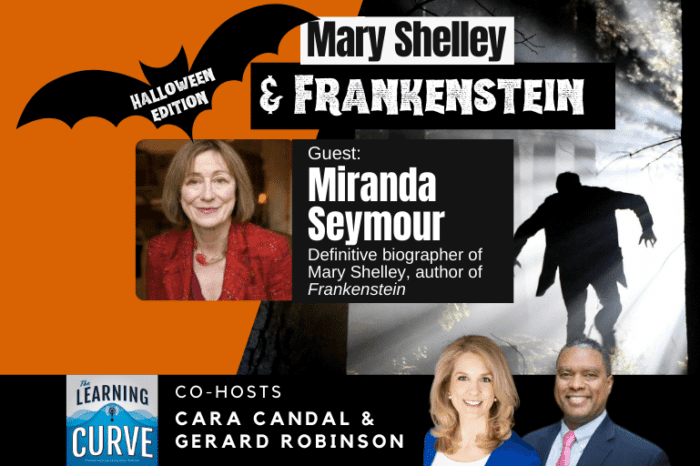UK’s Miranda Seymour on Mary Shelley and Frankenstein for Halloween
/in Academic Standards, Featured, Podcast /by Editorial Staff
This week on a Halloween edition of “The Learning Curve,” guest host Mary Z. Connaughton talks with Miranda Seymour, novelist and definitive biographer of Mary Shelley, author of the classic Gothic novel, Frankenstein. Ms. Seymour shares some of the main features of Shelley’s brilliant and tragedy-filled life that the general public and students should know more about, starting with her parents, who were gifted late 18th-century writers and radical thinkers. Ms. Seymour recounts the dramatic origin story of Frankenstein, influenced by Shelley’s circle of Romantic poets and intellectuals. They explore the novel’s cautionary lessons about the excesses of human pride; modern science, and medicine; and about humanity, loneliness, and education. Ms. Seymour also describes Shelley’s personal life, and why she remains compelling in our era. Ms. Seymour concludes the interview with a reading from her Mary Shelley biography.
Stories of the Week: News reports of declining performance nationwide on the National Assessment of Educational Progress (NAEP), known as the Nation’s Report Card, point the finger at pandemic school closures – but is there more to the story? Cara and Gerard offer insights.
Guest:
 Miranda Seymour is an English novelist, biographer, and critic. She has been a visiting professor at Nottingham Trent University and a Fellow of the Royal Society of Literature. Seymour’s works include biographies of Lady Ottoline Morrell, Mary Shelley, and Robert Graves, about whom she also wrote a novel, The Telling and a radio play, Sea Music. She wrote a group portrait of Henry James in his later years, entitled A Ring of Conspirators. In 2008 she published In My Father’s House: Elegy for an Obsessive Love, which won the 2008 PEN Ackerley Prize for Memoir of the Year. Seymour’s In Byron’s Wake covers the lives of Lord Byron’s wife and daughter, Annabella Milbanke and Ada Lovelace. She lives both in London and at her family’s ancestral home in Nottinghamshire, Thrumpton Hall.
Miranda Seymour is an English novelist, biographer, and critic. She has been a visiting professor at Nottingham Trent University and a Fellow of the Royal Society of Literature. Seymour’s works include biographies of Lady Ottoline Morrell, Mary Shelley, and Robert Graves, about whom she also wrote a novel, The Telling and a radio play, Sea Music. She wrote a group portrait of Henry James in his later years, entitled A Ring of Conspirators. In 2008 she published In My Father’s House: Elegy for an Obsessive Love, which won the 2008 PEN Ackerley Prize for Memoir of the Year. Seymour’s In Byron’s Wake covers the lives of Lord Byron’s wife and daughter, Annabella Milbanke and Ada Lovelace. She lives both in London and at her family’s ancestral home in Nottinghamshire, Thrumpton Hall.
The next episode will air on November 2nd, with Dr. Jack Rakove, Coe Professor of History and American Studies and Professor of Political Science Emeritus at Stanford University, and the Pulitzer Prize-winning author of Original Meanings: Politics and Ideas in the Making of the Constitution.
Tweet of the Week:
Catholic Schools Are a Rare Bright Spot in Nation’s Report Card 2022 Data. https://t.co/u58ZB61dIy @IraStoll #NAEP #NAEPday
— Education Next (@EducationNext) October 25, 2022
News Links:
The Washington Post: Scores fall coast to coast, especially in math, under pandemic’s toll
Get new episodes of The Learning Curve in your inbox!
Read a Transcript of This Episode
Please excuse typos.
[00:00:00] GR: Listeners, welcome to another great edition of the Learning Curve. I’m joined by my co-host and compadre Cara, and unlike previous shows where we actually share a story of the week, the only story of the week within the world of education is the NAEP scores and Nate reactions. And so we’re gonna dedicate our entire session between us to that section.
[00:00:25] So, Kara, how are.
[00:00:27] Cara: I, you know, I mean, , we knew it was coming . It’s not a, it’s not a great week for American education, for US education. I think j I might go is like a declining NAEP score for Halloween. I haven’t quite figured out how that, like a precipitous drop in math for Halloween. I’d like to certainly remind my home state, the commonwealth of Massachusetts, that who keeps touting that they remain number one in two measures.
[00:00:59] It’s like number [00:01:00] one of what? Of like the most disastrous thing we’ve seen since NAEP came on the scene, So I’m, I’m eager to talk about the, Maybe
[00:01:09] GR: we can shade. I’m hearing shade.
[00:01:11] Cara: Oh, I have a lot more to throw. Don’t you worry. And then I get solutions oriented, but like, for real, could we stop It states with the press releases trying to sugarcoat this because as a parent I find it offensive.
[00:01:24] So if you were one of those, That held steady, which is the best thing that could happen, right? If you were one of those states that held steady on nap and you didn’t hit right, then I think that you probably fall into the category of, it’s like, you know, it’s Florida did it in, fourth grade reading, there were a handful of others.
[00:01:42] It’s sort of like you fall into the category of you probably had reforms going on for a really long time that just sort of, Gave you a bit of a buffer to fall back on, but not something to pat yourself on the back about and let’s, Let’s not even start, nobody has even looked yet, I think in a really meaningful way at [00:02:00] what achievement gaps really look like, because we’re talking about folks just an overall precipitous.
[00:02:07] Decline, and I think we all know that it’s gonna be worse for the kids who have the least access. So anyway, Gerard, I just put it all out there. Let’s get going. What? I mean, tell me you have something more optimistic to say about all of this.
[00:02:21] GR: I’ve got something that’s optimistic and pessimistic and yet, A reality check with a dash of pragmatism.
[00:02:30] So here’s the pragmatism part. I’ve had conversations with several friends of mine who aren’t in the reform space, but who are parents and who are more interested in the Navy results for their school or state than ever before. And part of that is, Not post pandemic, but moving through pandemic realization that, hey, school’s closed.
[00:02:53] This could have an impact on my child’s education. So one of the things that I did for them, because this question came up all the time. [00:03:00] When did Nate even begin? Really the origins of Nate, The National Assessment of Education Progress has its origins in 19 63, 64, and that’s when three men in the area of education, one being Francis Keer, who at the time was the US Commissioner of Education formed, you know, later.
[00:03:18] I actually, former was a dean of Harvard Education School. You had John Gardner, who at that time was president of the Carnegie Foundation and Ralph Taylor, who was the charter director of the Center for Advanced Study in the Behavioral Sciences. And they got together and Francis Keppel said, Listen, how do we really know what American students in our schools truly know?
[00:03:41] And he raised that question in the 1960s, but guess. The idea that the department at that time, the Office of Education, had to report to the public. The quote, condition and progress of American education in quote, was a mandate not from the 1960s or the 1920s. It was from [00:04:00] 1867 from a Congressional Act. So the idea that we wanna hold schools accountable or know what they do is much older than the US Department of Education as we know it.
[00:04:11] So the Carnegie Foundation, along with the Ford Foundation, decided to provide money, and that led to a couple of conferences, gathering of people and scholars, and that laid the foundation for what we now know of as. Which is the nation’s report card to assess scores. So Cara, to get to your part about the shade.
[00:04:29] Throwing ? So that was in 64 in terms of one of the conferences. What else was taking place in 1964? It was the start of the Gomer pile show. And what a Hecker’s gomer pile my with Nate. Nick, I’ll tell you what it has to do. I’ll tell you exactly what it has to do For those of you too young, you know what go pile is?
[00:04:52] Go and take a look online. For those of you who’ve got more gray hair than myself, we probably saw a Goma pile show, and [00:05:00] there was, one word he would repeat three times and that was his signature line. And I think it’s the signature line from what I’m hearing about make results. And here it.
[00:05:12] Surprise, surprise, surprise. . That’s what Go Pile. I knew you were going there. I knew you. I was going there. Surprise, surprise, surprise. We had a major drop in scores, and as you said, Cara, we have a number of organizations left, right? Reform, traditional, otherwise with press releases, you can read those. So here’s.
[00:05:36] Pragmatic part For the listeners, I wanna provide a few items for you to think about, to think about what Nate means in your life. So one of them is an article called Educational Organizations as Loosely Coupled Systems. It was authored by Carl White in the 1976 article, and I’ll make sure I send this to Mikayla.
[00:05:55] I so she can post on our page. It’s one of the best articles I read [00:06:00] at that time. I would even say even now, one of the better articles, which wasn’t blaming teachers, it didn’t blame principals, it wasn’t about money, it wasn’t about unions. It wasn’t about reform. It was simply saying that if you wanna know some of the challenges with educational organizations, you have to understand how loosely coupled they are.
[00:06:18] And without giving away all of it, it just really tells you the institutional challenge. That we had with getting policy programs and people from idea to implementation. So I would say, take a look at that. Number two one of our colleagues, Dr. Checker Finn, one of the best scholars and practitioners for the last 30 years in education this year through Harvard Education Press, he actually published a book called Assessing the Nation’s Report Card Challenges and Choices.
[00:06:47] Must read for those who wanna get a better idea of what we’re doing. As you were talking about states and throwing some shade on Massachusetts, I took a look at what Chad Alderman, who is with EDOs, he did a [00:07:00] nice breakdown on states based upon race and income. So if you look at the highest scores for states in terms of white students it’s DC.
[00:07:10] Department of Defense and Florida White students in DC used to be chocolate city. Maybe now more curable city, but very interesting. Department of Defense states the worst. West Virginia, Oregon, and Maine. What about black students? Who have the highest scores? Department of Defense, again, Texas and Florida.
[00:07:30] Let’s look at who? Hispanics Department of Defense, Mississippi and Wyoming. And let me give a shout out to Mississippi because they decided a few years ago to start working with their teachers. Through Peggy bookings, their governor and others to make it happen. And when we look at Pacific Island students, New Jersey and Massachusetts, so some love for Massachusetts there and for low income students, Florida, Wyoming, and Indiana, those states let you know that you can work with low income students.
[00:07:57] you can get results. And I think we should take a look. [00:08:00] Right, my home state, and then I’ll end with this of Virginia. Governor Youngin said to well through his press release that today every Virginia clearly sees that our children need us now more than ever. And he identified the importance of transparency.
[00:08:13] Our Secretary of Education, Guera also said the results offer clear and wrenching statement about Virginia’s failure and call what we have now, catastrophic decline. And our superintendent of public instruction ballet said that basically that the democrats, the two previous administrations, had systematically lowered the standards.
[00:08:34] Response from Democrats was pretty strong. And the reason they say that we had a drop was because, quote, we have staffing shortages in schools across Virginia, ah, blah blah, blah . Yep. Students aren’t receiving proper resources and so and so and so and so and get this, Now is not the time to point finger at those who are no longer in leadership.
[00:08:53] Do we say that about the previous presidential administration? That’s another story. So I. We have a lot of finger [00:09:00] pointing and a lot of things going on, and at least the resources that I provided should help our readers just get a grasp about some of this stuff outside of party people and political interests.
[00:09:12] Cara: Yeah. No, I love it, Gerard. Thank you. And let’s, but let’s just pause for one minute because I think this argument, there are two arguments happening right now, and one is, well, this test really doesn’t mean anything. And why do we place so much emphasis on it? Which you always hear whenever people do poorly, right?
[00:09:28] We do this stuff with international exams, It’s like, Oh, we’re in the middle of everything. Even though we spend the most money, it doesn’t matter. It’s, we’re not gonna pay attention to that measure, right? And so I think. Number one, and then number two is the resources. Can we remind our listeners how much money during the pandemic, which is when this big decline happened, although.
[00:09:46] As Pioneer Institute will remind us in many states, including my home state, and I believe your home state, Gerard naps scores have been declining for years. So this is just a precipitous decline on the heels of a [00:10:00] steady decline. Right? So we, it’s something, it’s a conversation that we should have been having in more meaningful ways.
[00:10:05] Before the pandemic, but resources are there. I have been in calls just in the past two weeks with states who are saying, some of our districts still haven’t really, you know, allocated their funds even though they’re supposed to, and it’s really vague and how should we be spending these funds? So to that, I say, Please, please, please stop with this madness.
[00:10:24] the other piece of this is, you know, you gave shoutouts , and rightly so to the, few handful of states who can say, In contrast to everybody else, we were moderately like we might have a reason to be sort of not super depressed. Florida, Indiana, Mississippi. What do these states have in common?
[00:10:41] Well, I can tell you at least two of them and a third on the way have made very heavy investments in things like the science of reading. What does that mean? It means they used evidence based approaches to teaching basic skills. We obviously need that in mathematics as well because math has been the big story here.
[00:10:59] Math [00:11:00] declines have been precipitous and huge and no state, especially in eighth grade held steady or improved in math. Everybody declined. The other piece of this is for our listeners, you know, we’ve got the history of Nate, but also let’s go back to 2001 because what most people think of, if you’re a parent and you’re thinking about what these tests.
[00:11:21] They think of their state test. Did my kid pass the state test? How is my kid proficient on the state test? Well, what NAE shows us time and again, and this is what No Child Left Behind all the way back in 2001 when the federal government said, We’re gonna attach federal money to whether or not you have state standards and accountability measures, NAE was always meant to be the.
[00:11:42] Of whether or not those tests were rigorous enough. And so we now know too that, states didn’t show these kinds of precipitous. They showed declines, but they did not show these kinds of precipitous declines on their state tests. And that’s in part because NAE is a common standard that we can predict.
[00:11:59] We can draw [00:12:00] thread from it year to year to year to year, which is why it’s so important when we have discussions about are we gonna change things about Nate? Because you wanna be able to identify long term trends. state testing has sort of. if it’s happened during the pandemic, if it’s happened post pandemic, it’s not happened in a very meaningful way in many places.
[00:12:18] And there are good reasons for that, but it’s really sad. So, but part of the thing, Gerard, that I would love to touch upon here is the question of. Like, what’s next? what’s next here? Because I, I, now, I can be the declining Nape score for Halloween and be all depressed. And you could, give us Gomer pile and we have to have this moment, and then we need to leap to, And so what are we going to do?
[00:12:42] And As I’m thinking about that question, what are we going to do? I think about for example, we should point out that schools that generally remain open, meaning we have very limited data because it’s a very small data set that Catholic schools across this country were open during the pandemic.
[00:12:59] And yes, folks, [00:13:00] private schools are sampled on the nap as well. Private, charter, public, they’re all there. We know that those schools didn’t fare nearly as poorly as their public school counterparts because even in states that were closed, those schools were by and large open. So as a friend of mine says Dr.
[00:13:16] Christie Havana, she says, What this told us is that school matters. So going forward, how do we ensure that when the next thing happens, the next disaster, the next pandemic, the next anything, right? Just getting kids to stay in school. We’re still, by the way, having a huge problem with this. How do we ensure that school matters?
[00:13:34] And one of those things might be. Taking learning from the pandemic. So many states have poured money into tutoring. Some of them are doing it in a high quality way. What would it look like if that was the new normal for kids if we doubled down and said, It’s not about sending more air quotes, resources, read money to districts.
[00:13:55] It’s about getting those very target. Resources that are evidence [00:14:00] based and that we know will make a difference in the hands of families or in the hands of teachers to make sure that they are in the hands of students. I think that’s one thing that could make a difference. The other thing is, maybe we just need more school kids.
[00:14:12] Were outta school for a really long time. We maybe we need to start to have the conversation about like, Year round school in many places, extending the school day in many places. Time on learning, which we know still isn’t happening. We’ve got a guest to bring in here in just a minute. Sure. But man, I would love some of your ideas because you have been a state chief twice over and a teacher too.
[00:14:32] I know you have thoughts on what’s
[00:14:33] GR: next. I would tell researchers and families and lawmakers, if you’re interested in identifying what works. Take a look at the latest. for blue ribbon schools or one from five years ago because many times those schools have or serve low income students. They serve students in rural areas, urban.
[00:14:57] Areas all the challenges, and yet they’re [00:15:00] able to maintain academic achievement. I would study those schools and many of those schools are not choice schools. And so for those who say, What can we do for traditional schools? You already have the answer. The Department of Education, your state department.
[00:15:13] Of education. They’ve identified high performing schools with what we call students placed at risk. I would tell families, take a look at those schools and f figure out from your department or your superintendent, what can we learn from those schools to utilize for our schools here? Whether it’s in Charlottesville, whether it’s in Richmond or somewhere in your state.
[00:15:33] And number two, this is probably one of the few times we’re gonna get to just exhale because we’ve been through a lot for the last two and a half years, and we knew the scores were gonna be horrible. Some of us were shocked that they were this bad. Yeah. But we should really, as families, because these are your children, you should.
[00:15:53] Really take time to look at it and to ask three questions. What is my school doing to support the academic [00:16:00] wellbeing of my child? And a part be of that is, what can I do to help the school? Number two, identify how your school district or system is spending the money or not spending the money. I think only 15% of the money that you mentioned has been spent today, and I can tell you with a possible change in Congress or even if Congress stays the same, it’s gonna be a tough case.
[00:16:21] If you’re trying to tell Congress to give you more money when you didn’t spend what you had. Third thing is we’ve got over 30 gubernatorial elections this year. You still have time to place your vote, hold your governor accountable. Amen. In the next two years for the work, those are my suggestions, so I won’t have to say surprise, surprise, surprise.
[00:16:43] Cara: I love those suggestions. They’re clear, they’re cogent, and now we know you can be Gomer Pile for Halloween. Right. George . Listeners, stay tuned. We’re gonna post picture on Pioneer Institute website, Gerard. Okay. we get to, fortunately we have a [00:17:00] guest that is going to take our mind off of all of this today.
[00:17:03] We have the pleasure to bring you this just special treat just in time for Halloween. We’ll be turning over the mic to Mary Conan. She’s gonna speak with Miranda Seymour, who is the definitive biographer of Mary Shelly. And you know Mary Shelly as Yeah, yeah, yeah. She was. She was the poet, Shelly’s wife.
[00:17:23] But we come on now. We know her. At the author of one of the world’s most famous novels, Frankenstein. I should really go back and read. It has been so long, and they’re gonna discuss the origins of this famous monster and what he represents. I wish everybody who’s thinking about it too much a hiatus from this depressing news of the day.
[00:17:44] Enjoy your Halloween, Eat too many Reese’s peanut butter cups. I’ve already started to indulge and have a very, very happy Halloween. We will be back listeners right after.
[00:17:59] Mary: I’m [00:18:00] Mary Connaughton of Pioneer Institute, and this is our special Halloween edition of the Learning Curve. We are thrilled to have Miranda Seymour as our guest today. Miranda is an English novelist, biographer and critic. She’s been a visiting professor at Nottingham Trent University and a fellow of the Royal Society of Literature.
[00:18:21] Her works include biographies of Lady Ottoline, Moral Mary. She. And Robert Graves, about whom she also wrote a novel, The Telling and a Radio Play, C Music. She wrote a group portrait of Henry James in his later years entitled A Ring of Conspirators. In 2008, she published in My father’s House L for an Obsessive Love, which won the 2008 Penn actively prize for memoir of the.
[00:18:52] Seymour’s in Byron’s Wake covers the lives of Lord Byron’s wife and daughter, Annabel Millbank and Ada [00:19:00] Loveless. She lives in both London and at her family’s ancestral home at Thrumpton Hall In nodding Hampshire, today we will focus on her biography of Mary Shelley, author of Frankenstein, Miranda. We are really thrilled to have you here and welcome to the show.
[00:19:20] Miranda: it’s lovely to be on the show, and thank you so much for inviting me.
[00:19:25] Mary: We are thrilled. So let’s start with a few questions. Miranda, you’re an accomplished writer in the definitive biographer of Mary Shelley, the author of the classic Gothic novel Frankenstein. Would you share with our listeners how you first became interested in Mary Shelly and some of the main elements of her brilliant and tragedy filled?
[00:19:48] That the general public and students should know more about.
[00:19:51] Miranda: I’ve been interested in Mary Shelley for years because I love the Romantics. So I’d read [00:20:00] a lot about Barron and read his letters and read his life, and I’d read about the life of Mary Walston Craft, her extraordinary mother, who is one of the great figures in feminist history, and of course was the author of the Vindication of the, the Rights of Woman.
[00:20:19] And so that was kind of the root by which I came to marry. But it was also because I seem in my writing of biographies to always have sought out women who I thought had been either a. Underrated or misunderstood. And I was quite intrigued when I was reading a book about Mary Shelley written in 1972, which was right in the kind of throw at the beginning of revisionary work and women’s writing and so on.
[00:20:49] And this was by biography, I think she’s American, called Eleanor Flexner. And she said, Mary, Personality and gifts have been hardly dealt [00:21:00] with by Posterity always in contrast to her mother. And I remember that really WestEd my appetite. That’s exactly the kind of thing that makes me think, Well, I really need to explore a bit more.
[00:21:12] So then of course, I went back to Frankenstein and one can’t go back to Frankenstein too often. It’s an extraordinary book that always offers new readings, new interpretations, new surprises each time. And the fact that it was written by a girl of 18 was, again, appetite wedding to me is just so remarkable.
[00:21:33] But really what I became interested by in Mary Shelly’s life, first of all, was probably the fact that I’m a Londoner. It turned out that Mary Shelley grew up in the London very close to where I myself live, which is North London. And although some of the streets have disappeared, and actually the river near where Mary grew up has actually vanished under the [00:22:00] pavements.
[00:22:00] You can still actually see the places. So she was born there in 1797. Her mother tragically died about three weeks after giving birth to Mary. And I think this was something that. Cast an enormous and crucial shadow over Mary’s life because she was known always as the child of Mary Waston Craft and the child of an extraordinary father who in no way was prepared to bring a baby and then a young girl up on his own.
[00:22:38] He’d been an old bachelor until the year before Mary was born called William Godwin. William Godwin and, and Mary was craft lived together in an area called Summer’s Time, and when Mary was craft died, Godwin was left as the bereft [00:23:00] father and widower with this little girl to bring up. All her own Mary from that, really the practically the moment she could understand what anybody was saying were people who were coming to visit her father and to look at her as this child of Mary Wilson Craft.
[00:23:17] They all looked to her to be something extraordinary. And I think that’s why when young Percy Shelley came to visit her father, Met this extraordinary young girl who’d just come back from Scotland wearing the newly fashionable Scottish tartan, and he instantly identified her as not only the daughter of a man, he greatly admired William Godwin, who’d been a radical philosopher who’d fallen on hard times and was no running a book shop, selling children’s books, but.
[00:23:54] Most of all as the daughter of Mary Wasson Craft. And it was [00:24:00] very much in the spirit of her parents that Mary and Shelly and Mary’s rather difficult, troublesome stepsister, Claire Clairemont, who was much adored by Shelley, which was part of the problem. But they all secretly eloped. In 1814, they tiptoed away from her father’s house and went off.
[00:24:25] to Europe. Now, why were they eloping? Well, one very good reason was that Percy Shelley was already married to somebody else, so he certainly couldn’t get married, but very innocently. They supposed that William Godwin, because at one time he’d been a kind of rebel and a fire brand and he’d been saying, bring on the French Revolution and let’s have a revolution in England and.
[00:24:50] He had been somebody who they could really admire the ideas of and the courage of, but he’d actually changed because he’d [00:25:00] been very hardly dealt with by the government that came after the French Revolution, who were very down on any kind of rebellion in England and Godwin had kind of gone on ground.
[00:25:12] Underground with him had gone all his own opinions. So when Mary and Shelly and Claire went off to Europe thinking that her father would be absolutely thrilled, he was completely horrified by what they’d done. And I think it’s a very important element in. The sense of desolation alienation isolation in Frankenstein and the creature who Mary created that when Mary first came back to London in 1814, her father wouldn’t even let her in the house.
[00:25:46] She and Shelly were denied entrance. Even Claire was told she couldn’t come back and so they had a long, miserable time of feeling like outcasts.
[00:25:59] Mary: [00:26:00] that’s also interesting. I know William Godwin was a political philosopher and her mother, Mary Walston Craft was an early woman’s right advocate.
[00:26:10] They had ideas that were very strong and very opinionated and were considered radical thinkers. How do you think their ideas influenced her and the lessons that they imprinted on her life with their ideas? Did it impact her writing?
[00:26:27] It’s
[00:26:29] Miranda: interesting that one can see how conscious Mary was of her mother in something that she once wrote when she said, If I have never written to vindicate the rights of women I have ever defended women who have been oppressed at every risk. Befriended and supported victims of the social system.
[00:26:55] And you can see that’s directed at anybody [00:27:00] who did not see Mary as worthy of this kind of cloak that had been thrown over by her, her extraordinary mother. And the reason she was saying that late on in life was that yes indeed, Mary, when she was growing up with her father. Extraordinarily conscious of her mother.
[00:27:24] She worshiped the mother. She had never known when she and Shelly first began to meet, they actually had their ations. Some people even say they first made love on her mother’s grave. In St. Pancreas. And so that told you a little bit how much they venerated her. When Mary and Shelly eloped to Europe, one of the books that they took with them was Mary Walton Crafts.
[00:27:54] Wonderful moving book letters written during a short residence in Sweden, [00:28:00] Norway, and Denmark. Now, that book, which was written in 1795, was written after Mary Wof, who had indeed been incredibly bold and brave. She’d first of all, written this response to Edmund Burke, The Rights of Men, which he had written at Absolute White Hot Heat.
[00:28:21] In 1791, the year after that, she wrote the Vindication of the Rights of Woman 1792. And it was after that very boldly that she went off to France to witness the French Revolution at firsthand. And it. In Paris that she met an American adventurer, obviously an incredibly charming, charismatic man called Gilbert Imlay, by whom she had a child.
[00:28:55] Little Fanny Imlay, who is one of the most tragic figures in the [00:29:00] story of Mary Shelly, I think. Fanny was born in 1794. She was three years older than Mary. And when these remarkable letters were written, it was because Mary was craft had come back to England with little Fanny having been dumped by Gilbert Mney, and he’d gone to England ahead of her.
[00:29:24] And when she came back, she found he was already living with another woman and. Dispatched her and Fanny to go in search of a supposed treasure ship that he said had been lost. And, and evidence does now show there actually was a treasure ship. And yes, Mary did track it down, but the letters, which so inspired and haunted Mary and Shelly were these incredibly moving letters that Paul Mary Wilson Craft wrote to inlay from abroad.
[00:29:55] And they’re all. Do you know why have you forsaken me? Why have you [00:30:00] deserted to me? My, I’m so lonely. I’m roaming the world without you. And again, if you read Frankenstein, you can’t help feeling that this is the voice of the creature.
[00:30:11] Mary: Well, the dramatic story behind the late teenage Mary Shell conceiving of Frankenstein among friends and romantic poets at Lake Geneva, Switzerland in the summer of 1816, is among the most famous origin tales in all of literature. You tell us the story in a little more detail and discuss the intellectual influences behind Mary Shelly’s Imagining writing and publishing this world changing piece of horror
[00:30:40] Miranda: fiction.
[00:30:41] This is one of the world’s. Great. Well, I think probably in literature is, it is the great story that everybody knows. And the story begins with the fact that Claire Claremont marries very jealous. Stepsister [00:31:00] decided to find a point on it, to bag a poet for herself. Mary had got Shelly and Claire finding that Lord Barrons, after a year of marriage was on his own in London, went along to visit him, and in fact became pregnant by him and went out.
[00:31:18] To Switzerland, to Lake Geneva, taking Mary and Shelly with her in the hope of somehow trapping Barron into marrying her, becoming the, the acknowledged father of her child. So that’s why they were all out there. Byron had taken a new, very grand big villa called the Villa Dear Doty, which is still there today.
[00:31:42] And if you sweet, talk your way and you can still go and see the actual room in which famously, in this summer of darkness, which was the summer of darkness, because Mike Tambora in Indonesia had caused an enormous [00:32:00] eruption the year before. Laid a kind of a warning for climate change long before our own times across the world.
[00:32:08] When crops in America were all killed, people were eating nettles. In Europe, it, it was devastating and there was. Constant darkness. So when Mary and Shelly and Claire and Byron and a rather handsome young doctor called William Poll, who’d come along as Byron’s doctor, were gathered together at Villa dti.
[00:32:34] Telling ghost stories to spook themselves, which they loved doing. The weather was extremely obliging. There was lightning playing around the peaks of, the juror across the lake. There were candles being lit at three in the afternoon. There was rain rattling against the shutters. There was everything conducive to terror.
[00:32:57] That was the [00:33:00] setting in which the ghost stories were told, and in which Byron said, Why don’t we all write a ghost story of our own? Now here comes an interesting question. At the time, Dr. Polled Dori had been commissioned Byron’s publisher to keep a diary because Byron was already very, very famous.
[00:33:23] Shelley has to be said that this. Point was not famous at all. And Mary who had not reckoned Frankenstein was, , the daughter of Mary was from Kra, but not famous in her own right and the least, but Byron was worth keeping a diary about. So Will Por kept a diary all the time they were there. And in P Do’s diary, he says very clearly, they all started writing stories.
[00:33:47] The next morning well, That’s what he says, and I think that’s what we should believe, in which case, we can assume that remarkably Frankenstein began to be written early that [00:34:00] summer. But let’s just jump forward for a moment and it is a big jump. That’s 18, 16. Now we’ve got to jump right forward. Fast forward past Shelley’s death tragically of drowning in 1822, leaving Paul Mary with a little boy to bring up no money and a need to return to England to get him into school and to lead the respectable life to be kind of restored to society after this shocking life with Shelly, which.
[00:34:34] Kind of made her an outcast. So by 1831, when she was offered the chance of a reprint of Frankenstein, which would earn her some money, she for the first time wrote it a preface. Now, it was only then in 1831 when Mary was needing the money to send her son to school, that she produced [00:35:00] this incredibly famous romantic story that we know.
[00:35:04] Mary’s version by then was. Everybody else thought of a story to tell, but I myself could not think of a story. And she says in the preface, day after day, I came down and I felt so embarrassed. They’d all got their stories. I hadn’t got mine. And then in the preface, she tells us that she. One night had a rry or a dream, and it’s worth remembering that in the late 1820s, the whole idea of dreams as an in source of inspiration had become incredibly fashionable.
[00:35:39] So I think Mary knew what she was doing here. She wasn’t just taking it from Kuer, Kahne and courage who she knew anyway. Mary said that she had had a dream, and in this dream she had seen. the major scene of Frankenstein, which is [00:36:00] the scene in which the creature comes to life. And she described that memorably in that preface in a way that everybody who reads the book always connects with the book.
[00:36:12] And she was quite right. The preface was wonderfully successful. And the book did after that sell very. But in fact, back in 1816, what had actually happened was she didn’t really get going until the end of the summer. She carried on writing it when she got back to England with Shelly, that autumn, and importantly, during the autumn of 18 16, 2 tragedies took place, which I think feed into.
[00:36:44] Central thing in Frankenstein, which is the sense of guilt and isolation. And it’s there I think in the fact that in September, 1816, [00:37:00] poor Fannie Ley, who was Mary’s half sister, Killed herself in an inn at Swanzi wearing touching me, Mary Wilson Craft’s under clothes, which had got her initials on it.
[00:37:12] That was the only way they could identify her. And three months later, Shelley’s wife, Harriet Westbrook was found drown FLA in the Serpentine
[00:37:25] Those two deaths haunted Mary Shelly. And I believe that that sense of anguish and unhappiness also fed into her feeling of tremendous empathy for the creature. And it’s, important to realize also that Mary’s father was a remarkable novelist as well as a philosopher and. Written the year before they went out to Geneva uh, wonderfully successful in imaginative novel called Caleb [00:38:00] Williams, which has in it the idea of a doppelganger.
[00:38:04] Now, in. Frankenstein, one of the key elements to it, which has been brilliantly performed on stage in a production with Benedict Kamber patch in, England and the National Theater. Perhaps he came to America where the two actors playing Frankenstein and the creature would swap places each night. So you were never quite sure who was the Frankenstein and who was the creature, and that is, Central to Caleb Williams.
[00:38:36] This wonderful novel, greatly admired by both Shelly and by Mary, and it’s very much also a part of the story of Frankenstein After the creature has been given birth, if you like, in what? Frankenstein courses while labor. He’s created it from various [00:39:00] limbs, giant limbs. I’m always rather perplexed by the giant limbs.
[00:39:03] I can’t think why he couldn’t just choose ordinary sized limbs, but , he picked out kind of eight foot legs and eight foot arms, which always seems rather strange to me. Anyway, he had picked out the limbs and assembled them in his laboratory, and he had galvanized them with the help of lightning. the idea of lightning probably did come from the 18, 16 summer when they were accompanied by lightning the whole time around the lake.
[00:39:31] So with a lightning mast, he had galvanized his creature into life. He had become God and. It’s very interesting that during the time that Mary was writing Frankenstein and talking with the group out at Geneva there was a great deal of talk about a man called Dr. Lawrence, William Lawrence.
[00:39:57] Now William Lawrence had, A [00:40:00] doctor who had looked after Mary since she was a child, when she had a serious ailment with her arm, and they were all very worried and thought that perhaps her arm would have to be amputated. It was Lawrence who had looked at it, and then later he attended. Shelly. So they knew Lawrence quite well, but the one who knew Lawrence Best was William Poll, who’d actually been to his lectures and heard him.
[00:40:23] Now, Lawrence had been radical in suggesting more apropo doctors , and their patients. I think that the doctor is God and. The divine spark, which creates man is not God given. Now, back in the early 19th century, this was. Heresy. This was really dangerous talk and Mary is evidently thinking about that when she turns Victor Frankenstein, who is hubris [00:41:00] incarnate.
[00:41:00] he does think he’s God. He does think he can create man, and she certainly is referencing Lawrence’s ideas. But of course the, one of the most important lessons that Mary wanted us to be taught by her book was about parenting, which is a very, very modern subject. , what does Frankenstein do once his child has been galvanized into.
[00:41:31] He expresses absolute horror. He runs away from it. He goes to bed having terrible dreams about embracing his beloved cousin Elizabeth. and seeing grave worms crawling out of the bed clothes. And he is absolutely filled with horror by what the creature looks. And as I said, I don’t know why he chose to make a creature with a eight foot arms and legs, but anyway, he [00:42:00] did.
[00:42:00] And having done so when it began to move, I can imagine it was indeed very horrifying. Probably far more so than, the rather handsome Benedict CU patch could ever be. But , Frankenstein was appalled by his creation and rejected. And really this is the key element of the book for Mary. The creature is rejected and her father had believed in society as a force for good.
[00:42:32] Mary’s suggestion is that the creature is innocent, but that he learns to be evil from the way man treats him, and that is what turns him into what she never calls him, which is a monster. She only ever caught him the creature. And that was her main lesson I think, that she wanted to get across that if you Shelly, put it in an [00:43:00] anonymous review of the book, Treat somebody Ill, and they will become wicked, them well, and they can become good.
[00:43:10] Mary: When Mary Shelly established this entirely new genre of , fiction, she had cautionary lessons, as you described about the excesses of modern science and medicine. Can you talk just a little more about what Mary Shelly was trying to accomplish with Frankenstein? Was she also using the novel to warn humanity and posterity about the limits of scientific experiments?
[00:43:38] And trying to play God.
[00:43:40] Miranda: Evidently Mary was talking about hubris, and if we look at the way Frankenstein is, Constructed, which is very, very sophisticated for a young woman to conceive, [00:44:00] and at that time was very original. It’s, like Chinese boxes. There’s a story within the story. Within the story, the outer story, which is very relevant to the question you just asked Mary is this story of Captain Walton.
[00:44:15] Now, Captain Walton. A man who wants to sail up to the North Pole and conquer. The meaning of science, which he believes he will find there. Now, married actually, I think formed the idea of writing about his journey on a whaling ship, which then gets stuck in pack ice. It never gets to the North Pole, but somewhere near when she was just a very young girl.
[00:44:47] In 1811, she was only 14. She’d been sent up to Scotland by her father. Because of her ailment with her arm and because she got on very badly with her stepmother, [00:45:00] Mrs. Clement, I think it was partly to get her outta the way. And while she was up in Scotland, she was staying with a very, very clever family called the Baxter’s, who lived at a place called Bti Ferry.
[00:45:12] And BTI Ferry actually looked. At the whaling port of Dundee and the year before Mary Sheey arrived there, a boat called the Rodney, a whaling vessel had been trapped in pack ice, and I suspect that that was the original inspiration for. This outer story of hubris, which encloses the inner story of the hubris of Frankenstein in believing that he can actually.
[00:45:47] Create man. But interestingly, certainly in the first version of Frankenstein, the one that appeared in 18 18, 18 19 appeared of that Christmas in a [00:46:00] very modest edition by Lockton of only 500 copies. But in that edition, she says almost nothing at all about science. You are left to scratch your head over how this creature was.
[00:46:15] Created because she gives us very little clue. It’s only in the 1831 edition that she added in words like Galvanism. Galvanism having been something that Mary herself had firsthand experience of because when she was a child living in her father’s house, one of their great friends, Dr. Carl Lyle. One day came right to the house and told them about a galvanic experiment that he himself had seen when by using electric wires, the body of a dead man had been galvanized into light.
[00:46:56] And had flung up and on and actually struck one [00:47:00] of the spectators in the face. And I gather the poor man died of shock some hours later. So Mary certainly knew about Galvanism, but she only chose to mention it then. And I think that that tells us really that she was adding it then because she felt it would add to.
[00:47:17] Popularity and interest of the book, but it wasn’t the first thought in her mind, and I really do not think that central to her thoughts was the idea of warning man, not. To be ambitious because she was, after all, we must remember, married to a man who wrote about Prometheus, who had immense ambition of his own.
[00:47:44] I mean, Shelly was slow to achieve fame, but he was tremendously ambitious in his ideas. And Mary adored and worshiped him, So it seems to me very unlikely that she would’ve [00:48:00] opposed the idea of being ambitious. We have to remember that Mary herself had lost her first child. They called her Claire, but when Claire was only a few weeks old, the baby died in her Co.
[00:48:17] And Mary had written. Pathetically and led us to friends and in her diary about dreaming that they had rubbed the together and bought it back to life. And I think that ideas like that, the idea that you can somehow bring something back to life was very much in her mind, but I think she was a very.
[00:48:40] Devoted mother, I mean, Percy, the only surviving child, was almost mother to death. Mary couldn’t bear to let him out of her sight. She was somebody who had never known what it was to have a mother herself. And her father, although a brilliant man I think was not [00:49:00] one of these people who is sort of very physically warm, it’s very difficult to imagine William Godwin dangling Mary on his knee.
[00:49:08] I think it was something that came to her from the sense of absence from what she had not had that parenting. The thing that is most denied, most cruelly to the creature is critical to the happiness and to the growth of a human being. And I feel myself that that is the central lesson of Frankenstein
[00:49:31] Mary: in the novel, The monster, while abandoned, disoriented in an isolation, learns from a family to read and write about good and evil and the history of human.
[00:49:43] So, Also while in the woods, the creature comes across three books, Milton’s Paradise Lost. Gerta is the Sorrows of Young Ver and Blue Tart’s lives. Can you tell me the significance of those
[00:49:59] Miranda: books? [00:50:00] It’s a very good question. And the reason that, of course, Mary enables the creature to learn rather conveniently, he’s eavesdropping outside the window of the delays cottage because of course, pathetically, he has already become aware that his appearance terrifies people, so he learns.
[00:50:24] By simply eavesdropping while they are reading, they are very, very learned villagers. they’re not really villagers at all. They’re a fam, a learned noble family in exile, which all works rather well for them reading books of this kind. So what this provides the creature with is, An extraordinary voice.
[00:50:47] It’s one of the most striking things in the story of Frankenstein, that the creature has an eque, which Frankenstein himself can never match that the [00:51:00] creature. Is capable of sounding like Milton at his finest. Now, why did Mary particularly choose that book, which is really the crucial book for stories of young Verta and Pluto lives of books that would provide the creature with ideas of civilization and how man behaves.
[00:51:23] But Paradise Lost was the book, which Shelly was reading to Mary aloud after they returned from Switzerland when they’d gone to Bath to be with Claire while she gave birth to her little girl by Barron. So Mary, thinking about Frankenstein, beginning to write, Frankenstein was listening every night to Paradise Lost, and of course, Registering the extraordinary figure of Lucifer.
[00:51:55] And we all know the thing about the, the wicked people or the bad people get all the good [00:52:00] lines, and there’s no doubt that in Milton, Lucifer certainly out shines everybody else and. I think that Lucifer gave Mary the idea of a fallen angel, which does very much lend itself to . Her creation of the creature and the creature himself does identify with Lucifer.
[00:52:25] He does see himself as somebody who is a fallen angel and outcasts and an alienated creature. . And so she put that particular book to the double use. he’s providing the monster with the creature, with eloquence, and he’s also providing the creature with a kind of a role part.
[00:52:48] Mary: Finally, as we celebrate Halloween, Mary Shelby Frankenstein remains one of the greatest, most influential impression novels ever. These days [00:53:00] though classic novels are sometimes dismissed as dated or disparaged as elitist. How should parents and teachers talk about Frankenstein in Mary Shelly’s life in ways that will help young people find them as compelling as they were to you when you decided to write her biography?
[00:53:18] Miranda: I think for anybody reading about Mary Shelly today, what is really inspiring about her is her ability to deal. With the way the world perceived her. I mean, where we live in a world where we are constantly aware of how the world perceives us in, trolling and, internet and, and all such things.
[00:53:46] And Mary had to deal in a way that was. Extraordinarily hard for a young woman at that time with being excluded from society. [00:54:00] So when she married Shelly, when, Well, when she eloped with Shelly in 1814, she took a step that put her from being. the glorious daughter of Mary was from craft and the young woman who is going , to make a difference in the world today, into darkness, she couldn’t know what was coming next.
[00:54:25] There was no money. There were no friends that Shelly had just a little scattering of friends, but very few who would stick with him. They were regarded as very, very shocking figures, and I think. Something that speaks to us today is the courage with which Mary. In solitude after Shelley’s death in 1822 where she’d been cut off by Shelley’s family who was going to give her no money at all.
[00:54:58] She was in a foreign [00:55:00] country. She was living out in Italy. She had no money, no support. She’d written I think four novels, but they had had a very, very modest success. Nothing that could, bring home the bacon for her and her little boy, and, The way that she set herself to recreating her life to come back to England, where she, to her amazement, find that Frankenstein had become famous.
[00:55:28] And so had she, because it had been put onto the stage the very year that she came back, 1823. So the novel itself did achieve a fame , as a play all through the 19th century. Far more so it’s worth saying than as a. It was the play that everybody wanted to see and to talk about and to put on in country house parties.
[00:55:51] But Mary Admirably, I think, dedicated herself to being the good mother that she had never [00:56:00] had herself. She was a devoted mother to Percy and to really giving Shelly the position that she felt that he had not been given by the critics. It was really Mary, single handed who managed to. Put Shelly center stage, she did one, might think slightly overdo it.
[00:56:23] I mean, she, she sanctified him so much that she almost emasculated him. But there is that side to it. I think she did slightly overdue things, but one can understand why, because his reputation was so terrible. So I think that’s what one can take away from Mary is a real listening. Did a woman in those times with no help from the state, no help from society, managed to survive alone and do well, create a new life for herself, become a respected and admired figure.
[00:56:59] And I [00:57:00] think that that in itself is really admirable. , she was very courageous in what she did to help women who are outside society. Once she helped two women who wanted to get married, pretty unusual for those days, I can tell you. And Mary helped them forged passports and get away to France where they had a secret marriage, and it’s pretty courageous thing to do, I think back in the 1840s when we’re talking about Frankenstein.
[00:57:30] I think that the importance of the book today is, There’s no getting away from the fact that it is just a wonderfully readable, incredible, compelling story I’d, I’d really defy anybody who’s read it not to be thrilled by it and by the creation of the creature and by the chase and the drama and the excitement.
[00:57:52] it’s wonderful stuff. But also I think for anybody interested in creative writing, [00:58:00] it’s a very, very good early. Lesson in how to write a very ingenious and sophisticated novel with one story set within another story within another story. And it’s only after you’ve read it that you realize that practically the entire book has been told.
[00:58:19] To you by the creature. But you, tend to forget that. And that’s very clever writing on Mary’s part. And I think that most important lesson, which is, one I I’ve said before, is that it is above all about something which never goes out of date. It’s as important now as it ever was, which is to stick by your children.
[00:58:44] A terrible story of a hubristic man who creates a child. He finds ugly, and because it is ugly, he rejects it. And I think that that [00:59:00] is a terrible idea, which remains as topical and as important today as it was in Mary Shelly’s.
[00:59:09] Mary: Miranda, that was all wonderful. , would you be willing to read a favorite passage from your biography of Mary Shelly to close out the show?
[00:59:19] Miranda: Absolutely, I’d be delighted , to read a bit from a book that I, worked so hard to research and to produce and I’m very proud of the fact that it seems to have remained the, considered the definitive life of Mary Shelly.
[00:59:36] This is from a part that I called the afterlife, which describes Mary. Life after Shelly’s death and also the life of her in how we look at her after her death. Mary wrote her one great work when she had only begun to taste the bitterness of [01:00:00] rejection. The most powering aspect of her life is to see how through no fault of her own, it began to mirror her.
[01:00:09] Mary, like her creature became a pariah. When Shelly died, his friends had already been made aware that his marriage was on the rocks and that the port was Mary’s is graced by her connection to him, tortured by the sense of her own inadequacy as a wife. Publicly disowned by his family Maring. Her widowhood was thrust into the icy regions of solitude to which she had banished the creature of her imagination, honed, persecuted, and vilified.
[01:00:43] She taught herself how to survive. She remained until the end of her. Generous, forgiving, tolerant, and hopeful. The depression, which he voiced in her journals, was as we always need to remember, hidden from her [01:01:00] friends. Her father was one of the very few people who saw and pitted the disposition to Mely, which he had inherited from his wife.
[01:01:09] One wonders how much more sympathy Mary might have gained if she had been a little less fiercely reserv. Mary Shelly is not the active, enthusiastic, optimistic woman described by recent biographers. She is a woman who struggled all her life against the unpredictable volatility of her own nature, who never knew when the black cloud of depression would settle around her, who was tormented by the sense of her own inability to become what she felt the word expected her to.
[01:01:42] A second. Mary Wilson Craft, who tortured herself with the thought that every misfortune that came to her was directed by fate as her punishment for having taken Shelly from his first wife and for having failed him herself. The most admirable [01:02:00] thing about Mary is feeling as she. She never surrendered, seldom revealed her unhappiness and continued until the end of her life to work to win.
[01:02:11] Shelly never herself. The honor that she felt was his due,
[01:02:16] Mary: Your writing is a gift to all of us. Miranda, thank you so much. we have great appreciation for all that you do and we certainly are very thrilled that you were able to join us for this
[01:02:29] Miranda: podcast. Well, Thank you so much. It’s been a real pleasure and both Mary and her wonderful novel.
[01:02:37] I love, talking about them. So thank you so much.
[01:02:40] Mary: I’m sure you inspired many listeners to read it again or a first time if they haven’t already. Who is wonderful.
[01:02:47] GR: And speaking of na, I have a tweet of the week from Iris Stole From Education. Next Catholic Schools are a rare, bright spot in Nation’s report card for [01:03:00] 2022 data. So we provide some optimistic news from an important segment of the American education. Yeah,
[01:03:09] Cara: school matters. Gerard, being at school makes a difference for kids no matter what form it takes, right?
[01:03:15] It could be in person learning, but high quality homeschooling, hybrid learning, all of the things. Too many kids didn’t have access to it. School matters. Gerard, next week, believe it or not. We have another Pulitzer Prize winner. We are going to be speaking with Jack Rakove of Stanford University. Mm-hmm.
[01:03:35] and he’s gonna be coming to us to discuss James Madison and the Constitution. So I know we got a lot of uh, learning curve listeners that are history buffs. Looking forward to it. Until then, Gerard have a very safe and happy Halloween, and we’ll keep thinking of solutions To this crisis we find ourselves in in the moment.
[01:03:53] We’ll, we’ll promise our listeners that in due course take
[01:03:57] GR: care of well, knowing I have you as a partner, I know we [01:04:00] will find solutions to. Sounds good. Have a good one. Bye. Bye.
Recent Episodes
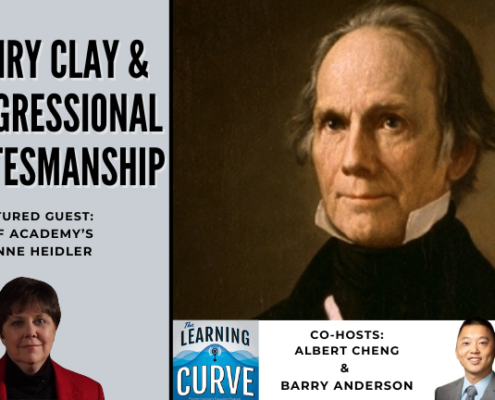
USAF Academy’s Jeanne Heidler on Henry Clay & Congressional Statesmanship
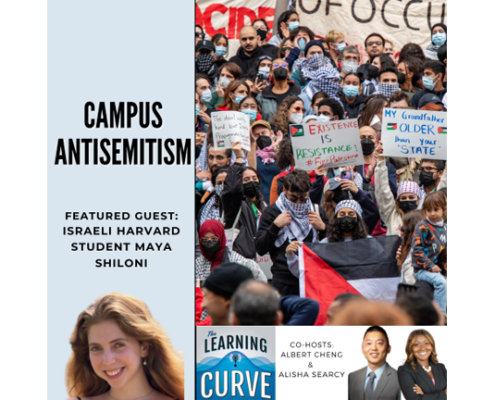 https://pioneerinstitute.org/wp-content/uploads/TLC-Shiloni-05292024-767x432-1.png
432
767
Editorial Staff
https://pioneerinstitute.org/wp-content/uploads/logo_440x96.png
Editorial Staff2024-05-29 16:14:072024-05-29 16:27:34Israeli Harvard Student Maya Shiloni on Campus Antisemitism
https://pioneerinstitute.org/wp-content/uploads/TLC-Shiloni-05292024-767x432-1.png
432
767
Editorial Staff
https://pioneerinstitute.org/wp-content/uploads/logo_440x96.png
Editorial Staff2024-05-29 16:14:072024-05-29 16:27:34Israeli Harvard Student Maya Shiloni on Campus Antisemitism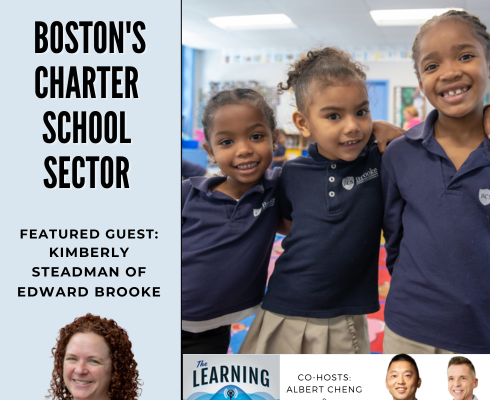
Kimberly Steadman of Edward Brooke on Boston’s Charter School Sector
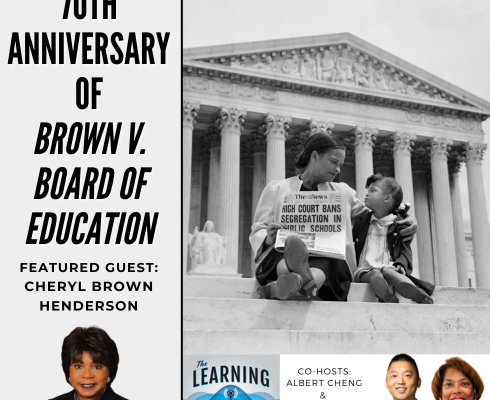
Cheryl Brown Henderson on the 70th Anniversary of Brown v. Board of Education
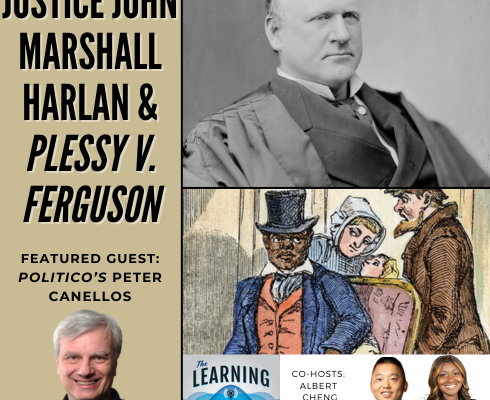
POLITICO’s Peter Canellos on Justice John Marshall Harlan & Plessy v. Ferguson

Colonel Peter Hayden on U.S. Cyber Command & National Security
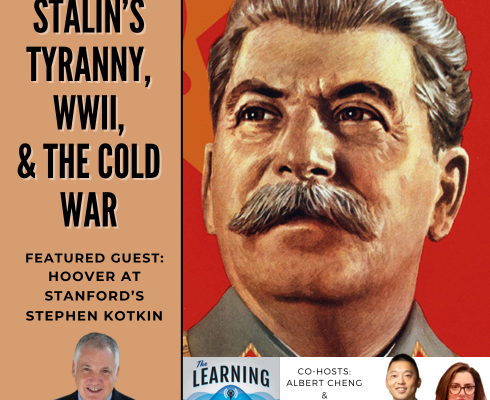
Hoover at Stanford’s Stephen Kotkin on Stalin’s Tyranny, WWII, & the Cold War
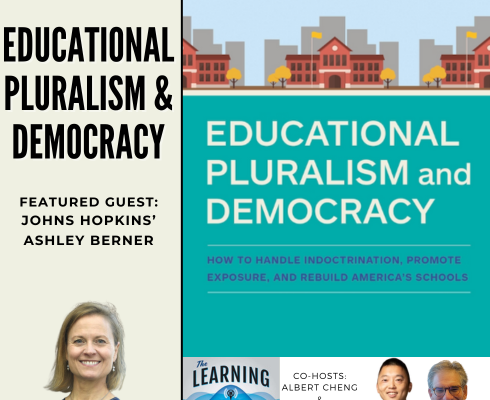
Johns Hopkins’ Ashley Berner on Educational Pluralism & Democracy
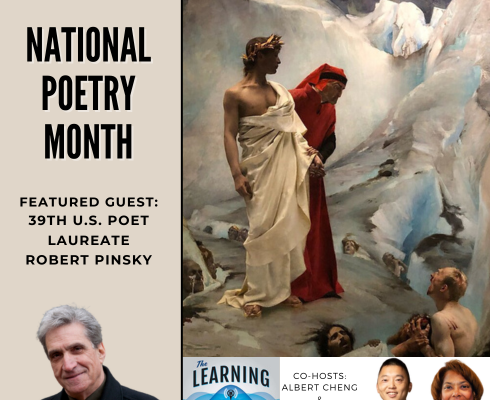
39th U.S. Poet Laureate Robert Pinsky for National Poetry Month
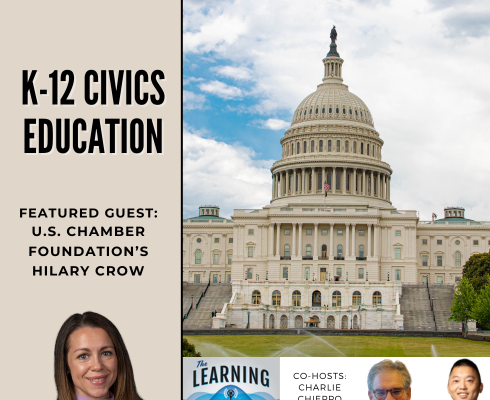
U.S. Chamber Foundation’s Hilary Crow on K-12 Civics Education
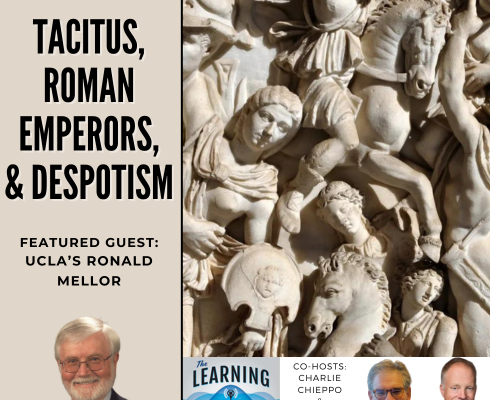
UCLA’s Ronald Mellor on Tacitus, Roman Emperors, & Despotism
